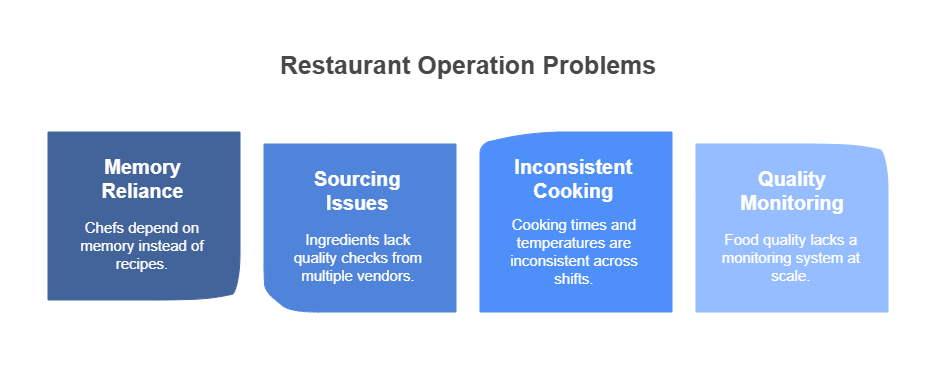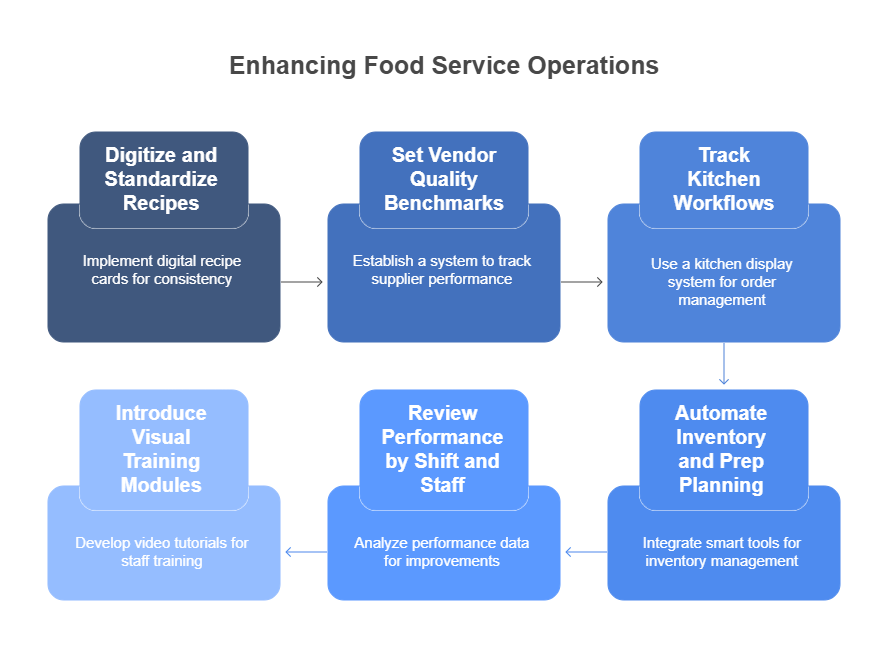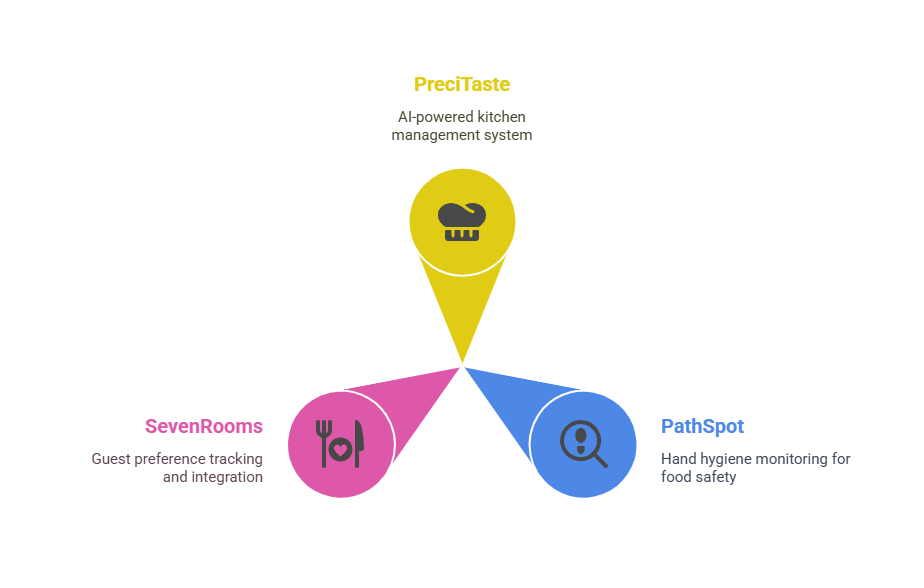It is the beginning of the end for guesswork in the food service industry. Not long ago, restaurant owners could overlook slight variations in taste or presentation. Recipes were sometimes passed by word of mouth. Measurements were often based on intuition. Some days, dishes tasted fantastic. Other days, customers could tell something was off. And with review-driven platforms and food delivery aggregators, inconsistency now comes at a cost. It is the era of maintaining consistent food quality.
Today, food consistency is not limited to being a nice-to-have. One dish tasting different than it did last week can lead to a bad review. One off day in quality can push a regular customer to try a competitor. Consistency is no longer about aiming for perfection. It is about building trust. And that highlights it’s importance.
Why Food Consistency Is Hard to Maintain
Most restaurants start strong. But over time, things slip. Staff turnover leads to recipe drift. Ingredient sourcing varies. Training gets rushed. Here are some specific problems operators face:
- Chefs and cooks rely on memory instead of documented recipes.
- Ingredients are sourced from multiple vendors with no quality checks.
- Cooking times and temperatures vary between shifts.
- There is no system to monitor food quality at scale.
These inconsistencies may seem minor. But they add up. A report by Toast (2023) revealed that more than 60 percent of diners will avoid returning to a restaurant after one poor experience.
What Happens When Food Consistency Fails

Inconsistent food quality has a ripple effect across operations. It leads to:
- Customer complaints and loss of repeat business
- Negative reviews and reduced online ratings
- Inefficient training due to unclear processes
- Increased food waste and inventory mismanagement
- Staff frustration and burnout
Consider how brands like McDonald’s and Domino’s maintain consistency across thousands of outlets. This isn’t something that just falls into place by chance. It is something that is achieved through strategy and system. Among these is the use of digital recipe cards, automated timers, measured ingredient kits, and strict kitchen workflows. You can walk into a Domino’s in Chicago or Mumbai and expect the same crust, cheese, and sauce ratio. That is not by chance. It is by design.
How to Ensure Food Quality and Consistency in Your Restaurant
Let’s break this into steps that can be applied to any food service operation:
- Digitize and Standardize Recipes
- Use software to create centralized digital recipe cards that include portion sizes, step-by-step prep instructions, prep time, allergen information, and high-resolution images. Staff can access these on tablets or kitchen displays, eliminating verbal errors or variations.
- Set Vendor Quality Benchmarks
- Build a vendor management system that lets you track supplier performance, conduct quality audits, and assign ratings. This helps you enforce consistent ingredient sourcing across locations and avoid supply chain surprises.
- Track Kitchen Workflows
- Implement a kitchen display system that automatically updates orders, breaks down complex recipes into stepwise instructions, and alerts staff when steps are missed or delayed. This reduces errors, even during peak hours.
- Automate Inventory and Prep Planning
- Integrate smart inventory tools that connect sales with stock usage. This allows your system to forecast demand, flag low stock, suggest reorders, and notify staff when prep work should begin for the next shift.
- Review Performance by Shift and Staff
- Use performance dashboards that give insights into prep times, recipe compliance, customer ratings, and ticket resolution. You can even compare across shifts and locations to identify gaps and improve training.
- Introduce Visual Training Modules
- Develop short, role-based video tutorials that walk staff through tasks in the kitchen. These can be tied to recipe cards or triggered by the kitchen display system, allowing new hires to train themselves at their own pace.

Each of these steps becomes more powerful when supported by a tailored software solution. If you’re looking to streamline your operations and build systems that actually match your kitchen’s needs, our team at Enacton builds custom restaurant software with all of this in mind.
Talk to us about building a custom software solution that works for your team, your menu, and your vision.
What Software Can Solve
The fact of the matter is that these challenges that are listed above are tough to solve manually. Especially when your restaurant scales. Whether you have one location or ten, consistency is easier to manage with restaurant management software.
With a unified software solution, you can:
- Lock down recipe standards and sync updates in real time across all locations
- Track ingredient use and automate reorders based on actual usage, not guesswork
- Ensure every team member follows the same process for cooking, plating, and serving
- Get alerts when prep times deviate or when a recipe is not followed accurately
- Track feedback and link it to specific dishes or time slots
You can see this in action on our page: Explore Our Restaurant Management Software
AI Is Already Powering Consistency. Let’s Talk About It
AI is already playing a major role in ensuring consistent food quality. Leading tools include:
- PreciTaste: Uses AI to guide kitchen staff and reduce human error in prep.
- PathSpot: Scans employee hands for cleanliness in real time, boosting food safety.
- SevenRooms: Tracks guest preferences and integrates them with kitchen operations to deliver personalized and accurate dining experiences.

These tools are effective on their own. But the real power comes from integration. Connecting them to your current system, customizing workflows, and training your staff to make the most of them is where the real value lies.
That is where we come in.
At Enacton, we specialize in building and integrating custom foodtech software. Whether you want one tool or a connected platform that handles everything from recipe control to real-time AI recommendations, we help you make it happen.
Explore our foodtech capabilities here: Foodtech Software Development
Food Consistency Is Not Optional
Any restaurant owner will tell you that keeping food consistent is one of the hardest things to get right.. and one of the most important. It affects everything from customer loyalty to staff performance and overall brand trust.
You can have a beautiful space and great service, but if the food is unpredictable, the business suffers. That is why systems and software are no longer optional. They are essential. With the right tools and strategies, you can ensure your dishes taste the same, look the same, and leave customers just as satisfied every single time.
Your food quality is the heart of your brand. If your dishes are inconsistent, everything else starts to slip.
With the right systems, software, and strategy, your restaurant can build a reputation for reliability. For excellence. For being the place where customers know exactly what to expect every time.
Let’s make that your reality.
Book a free consultation with Enacton and let’s talk about building your consistency engine.
